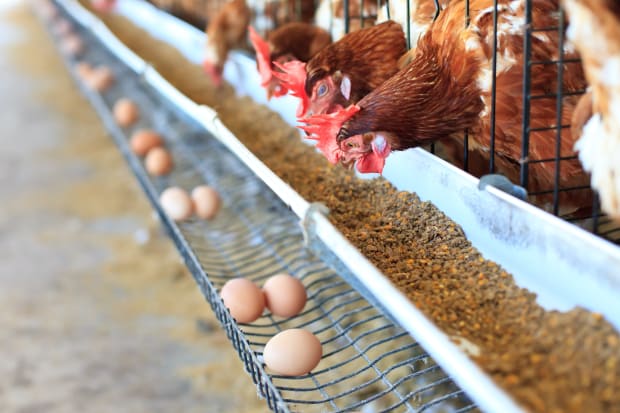In August, record-breaking rainfall soaked the Dallas area—15 inches fell in 24 hours, overwhelming streets and submerging cars; rising river waters inundated Jackson, Miss., and left some 180,000 people without fresh water, and one third of Pakistan was underwater from a huge monsoon.
Ice melting from the enormous Greenland ice sheet will eventually raise the global sea level by at least 10 inches just on its own, scientists report. To put that in context, for every 1 foot of vertical rise in sea level, 100 feet of shoreline is swallowed up if the slope is just 1% or more.
While plug-in electric car market share is up to about 12%, according to InsideEVs, the human-caused greenhouse gases leading to the climate crisis is about more than what we drive--a lot of it has to do with what we eat.
Our food system--producing food, transporting it and throwing wasted food in landfills--produces about 37% of global greenhouse gas emissions.
A big part of these emissions are methane, much of which comes from livestock, especially cows, according to the World Wildlife Fund: beef production uses more agricultural land than all other domesticated animals and crops combined. Cattle eat an increasing proportion of grain produced from agriculture, are one of the most significant contributors to water pollution and soil degradation, and the meat and by-product processing is a major source of pollution in many countries, according to WWF.
That’s why beef tops this list of foods with the biggest carbon footprint.
Animal-based foods tend to have a higher footprint than plant-based, according to Our World in Data. The impact of the food we eat can be measured in carbon dioxide equivalents (CO2eq), meaning non-CO2 gases are weighted by the amount of warming they cause over a 100-year timescale.
Beef — especially steak — produces the most CO2 equivalents of virtually all foods: 129.75 kg of carbon dioxide equivalents per 2.2 pounds of beef steak, or nearly 50 kg of per 100 grams (3.5 ounces) of protein. Lamb and cheese both contribute more than 20 kilograms CO2-equivalents per kilogram, and poultry and pork have lower footprints but are still higher than most plant-based foods, at 9 and 12 kg of CO2-equivalents, respectively.
The easiest solution is to eat less meat, especially beef. Meanwhile, scientists are also working on reducing the methane emissions of cattle: anaerobic manure digesters capture the methane released as the manure is processed into liquid fertilizer; and feed additives, including seaweed, interrupt the microbial processes in a cow’s gut that produce methane.
To reduce your food footprint, WWF recommends rebalancing your diet to prioritize plants and plant-based foods and reducing your meat intake, eat more variety, avoid foods packaged in plastic, reduce food waste, grow your own food, eat what’s in season, and eat responsibly produced seafood.
Here are the greenhouse gas emissions produced by some of the most common foods we eat, from a list of 211 foods at Our World in Data.

Beef steak
Beef steak has by far the most emissions: 129.75 kg of carbon dioxide equivalents for 2.2 pounds of beef steak, 2.4 times more than even a beef burger, which still out paces all other non-beef foods.

Beef burger
53.98 kg of carbon dioxide equivalents per 2.2 pounds

Lamb chops
30.9 kg of carbon dioxide equivalents per 2.2 pounds

Prawns
20.91 kg of carbon dioxide equivalents per 2.2 pounds

Cheddar cheese
20.75 kg of carbon dioxide equivalents per 2.2 pounds

Coffee pods
20.3 kg of carbon dioxide equivalents per 2.2 pounds

Goat cheese
19.31 kg of carbon dioxide equivalents per 2.2 pounds

Tea
17.62 kg of carbon dioxide equivalents per 2.2 pounds

Coffee beans
16.82 kg of carbon dioxide equivalents per 2.2 pounds

Tuna
13.08 kg of carbon dioxide equivalents per 2.2 pounds

Pork chops
12.16 kg of carbon dioxide equivalents per 2.2 pounds

Milk chocolate
10.8 kg of carbon dioxide equivalents per 2.2 pounds

Salmon
10.41 kg of carbon dioxide equivalents per 2.2 pounds

The following foods produce less than 10 kg of CO2eq per 2.2 pounds:
Chicken thighs
9.98 kg of carbon dioxide equivalents per 2.2 pounds
Chicken breast
9.27 kg of carbon dioxide equivalents per 2.2 pounds

Raspberries
8.37 kg of carbon dioxide equivalents per 2.2 pounds

Meat pizza
7.4 kg of carbon dioxide equivalents per 2.2 pounds

Olive oil
5.18 kg of carbon dioxide equivalents per 2.2 pounds

Lettuce
4.93 kg of carbon dioxide equivalents per 2.2 pounds

Eggs
4.44 kg of carbon dioxide equivalents per 2.2 pounds

Rice
3.93 kg of carbon dioxide equivalents per 2.2 pounds

Cow's milk
3.7 kg of carbon dioxide equivalents per 2.2 pounds

Yogurt
3.11 kg of carbon dioxide equivalents per 2.2 pounds

Tomatoes
2.27 kg of carbon dioxide equivalents per 2.2 pounds

Sugar
1.85 kg of carbon dioxide equivalents per 2.2 pounds

Wine
1.72 kg of carbon dioxide equivalents per 2.2 pounds

Quinoa
1.14 kg of carbon dioxide equivalents per 2.2 pounds

Pasta shells
1.03 kg of carbon dioxide equivalents per 2.2 pounds

The following foods produce less than 1 kg of CO2eq per 2.2 pounds, and are among those with the lowest environmental impact.
Sweet corn
0.97 kg of carbon dioxide equivalents per 2.2 pounds

Carrots
0.94 kg of carbon dioxide equivalents per 2.2 pounds

Bread
0.88 kg of carbon dioxide equivalents per 2.2 pounds

Beer
0.69 kg of carbon dioxide equivalents per 2.2 pounds

Almond milk
0.66 kg of carbon dioxide equivalents per 2.2 pounds
Food can also be measured by water footprint: the amount of fresh water that’s drawn in production, and some plant-based foods, like almonds, use quite a bit. A kilogram of cheese requires 5,605 liters of water, nuts require 4,134, prawns and fish more than 3,500 liters and beef 2,714 liters. Rice requires 2,248 liters. Some of the lowest impact foods by this measurement are potatoes (59 liters) and root vegetables (28 liters).

Almonds
0.6 kg of carbon dioxide equivalents per 2.2 pounds

Apples
0.5 kg of carbon dioxide equivalents per 2.2 pounds

Onions
0.36 kg of carbon dioxide equivalents per 2.2 pounds

Potatoes
0.21 kg of carbon dioxide equivalents per 2.2 pounds
The humble potato is the champion: Potatoes and onions produce the fewest emissions of the list of 211 foods.

This visualization compares the greenhouse gas emissions for all of the foods on this list. You can see more at Our World in Data.
Source: Our World in Data, CCby 4.0






